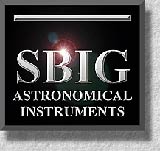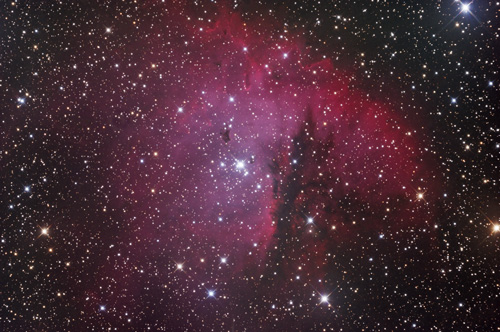| Type | Emission |
|---|---|
| Right ascension | 00h 52m 59.3s[1] |
| Declination | +56° 37′ 19″[1] |
| Distance | 9.5 kly (2.9 kpc)[2] |
| Apparent dimensions (V) | 35′ |
| Constellation | Cassiopeia |
| Physical characteristics | |
| Radius | unknown |
| Absolute magnitude (V) | Unknown |
| Other designations | IC 11,[1] Sharpless 184, Pacman Nebula |
NGC 281 is an H II region in the constellation of Cassiopeia and part of the Perseus Spiral Arm. It includes the open cluster IC 1590, the multiple star HD 5005, and several Bok globules. Colloquially, NGC 281 is also known as the Pacman Nebula for its resemblance to the video game character.
The nebula was discovered in August 1883 by
E. E. Barnard, who described it as "a large faint
nebula, very diffuse." The multiple star HD 5005, also
called
 ,
was discovered by
S. W. Burnham. It consists of an 8th-magnitude primary
with four companions at distances between 1.4 and 15.7
seconds of arc. There has been no appreciable change in
this quintuple system since the first measurements were made
in 1875.
,
was discovered by
S. W. Burnham. It consists of an 8th-magnitude primary
with four companions at distances between 1.4 and 15.7
seconds of arc. There has been no appreciable change in
this quintuple system since the first measurements were made
in 1875.
The nebula is visible in amateur telescopes from dark sky locations. In his book Deep Sky Wonders, Walter Scott Houston describes the appearance of the nebula in small telescopes:[3]
There was a faint glow in the immediate vicinity of the multiple star, with an occasional impression of a much larger nebulosity...Its surface brightness was much less than that of M33 in Triangulum or NGC 205, the distant companion of the Andromeda galaxy.






